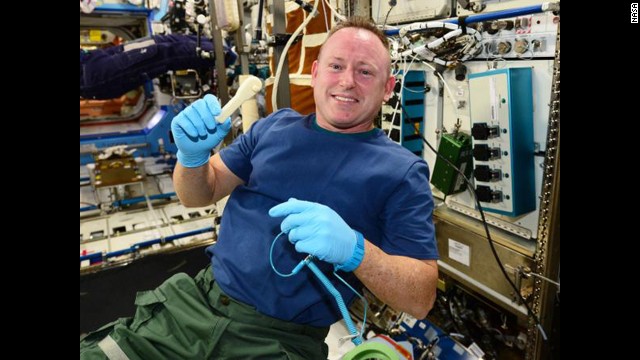Twist and shout: NASA prints 3-D wrench in space
.
This week, thanks to 3-D
printing, astronaut and ISS commander Barry "Butch" Wilmore had a wrench
he needed manufactured by a printer in just four hours.
The ratcheting socket wrench was the first "uplink tool" printed in space,
according to Grant Lowery, marketing and communications manager for
Made In Space, which built the printer in partnership with NASA. The
tool was designed on the ground, emailed to the space station and then
manufactured.
From start to finish, the process took less than a week.
Made in Space's 3-D
printer is the first to operate in zero gravity, and printed its first
object in orbit -- a part for the printer, ironically -- in November.

Astronaut Barry "Butch" Wilmore holds up the ratchet after removing it from the print tray.
"This means that we could
go from having a part designed on the ground to printed in orbit within
an hour to two from start to finish," Niki Werkheiser, NASA's 3-D print
manager, said in a press release
when the printer was sent to the ISS in September. "The on-demand
capability can revolutionize the constrained supply chain model we are
limited to today and will be critical for exploration missions."
The goal for the project is to create in-space manufacturing, especially as missions venture farther from Earth.
Ultimately, Lowery said
the wrench and other objects will be sent back to assess whether there
are any functional differences between those samples printed in space
versus those on the ground.

No comments:
Post a Comment